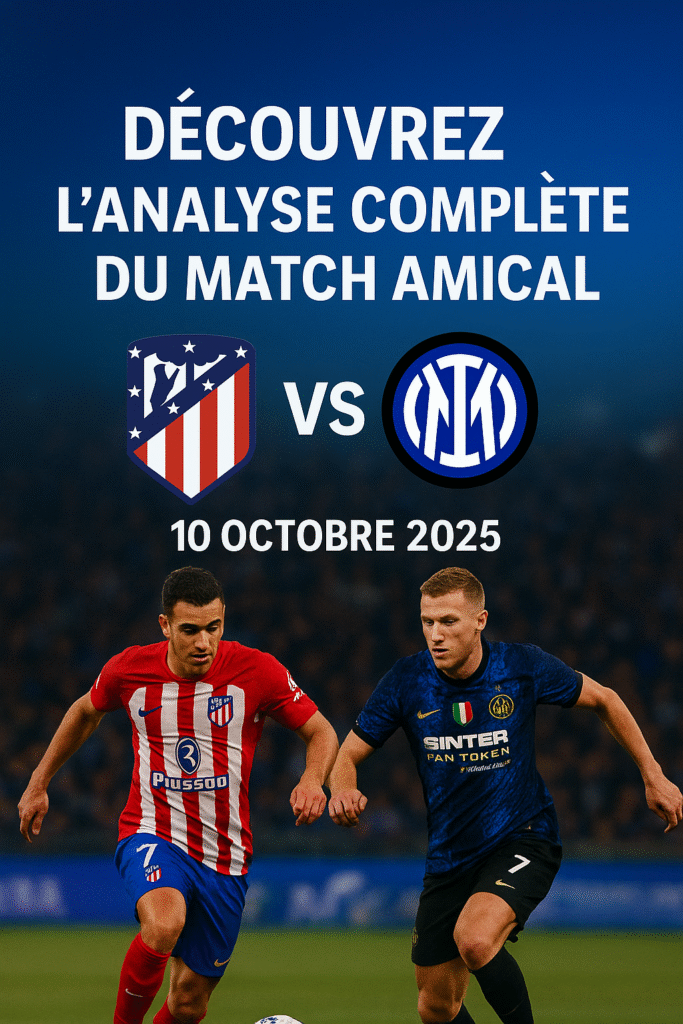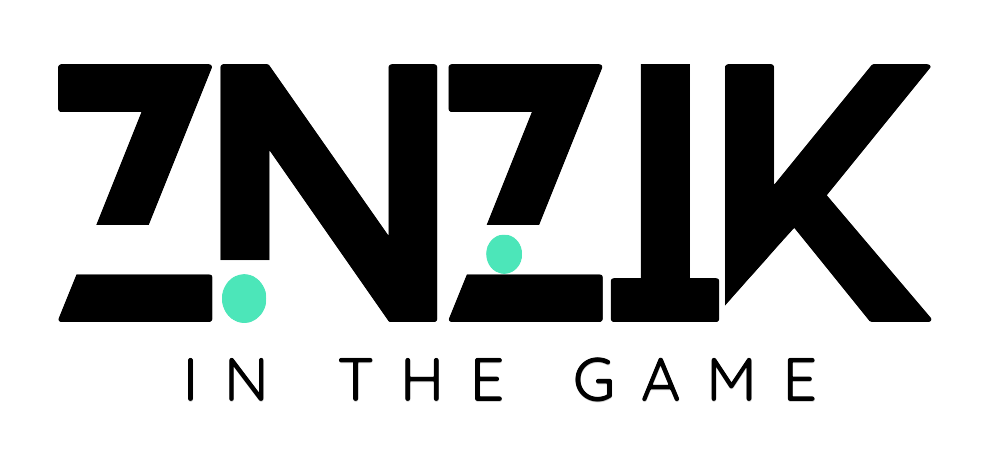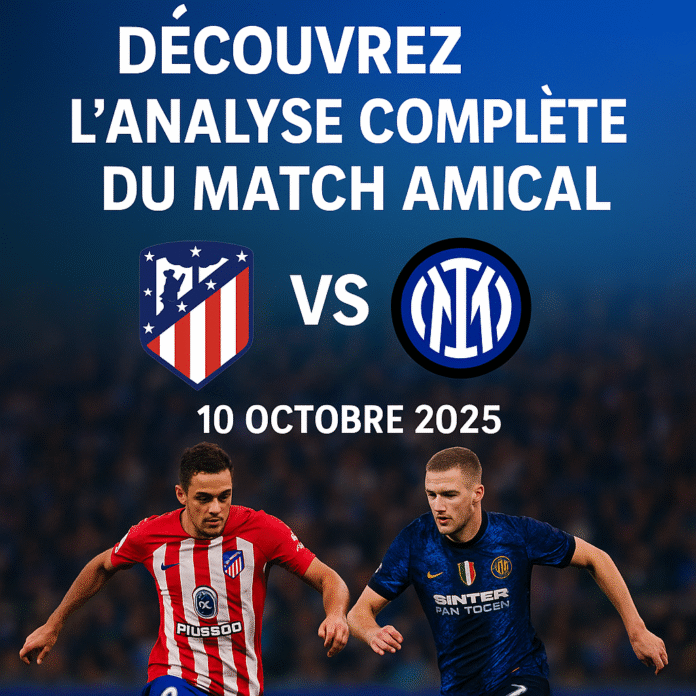Atlético Madrid vs Inter Milan: Complete Analysis and Information on the Friendly Match of October 10, 2025
Key Details of the Friendly Match (Club Friendly Games)
Football friendlies between European giants serve purposes far beyond simple exhibition matches. When two powerhouses like Atlético Madrid and Inter Milan face each other, even outside competitive tournaments, the encounter carries significant weight for tactical preparation, squad evaluation, and maintaining competitive sharpness during the season.
This particular friendly takes on added importance given its timing and context within both clubs’ demanding schedules. International breaks and mid-season interruptions create opportunities for these high-profile matches, allowing managers to experiment while maintaining player fitness and rhythm.
Date, Time and Event Location
Kickoff Date and Time (October 10, 2025, 18:20 CEST, Postponed for Logistical Reasons)
The match was originally scheduled for October 10, 2025, with an 18:20 CEST kickoff time—a typical evening slot that maximizes television viewership across European time zones. However, logistical complications forced postponement, a common occurrence in international friendly arrangements where travel coordination, venue availability, and player release from national team duties create scheduling complexities.
Postponements, while frustrating for fans, sometimes benefit clubs by providing additional recovery time or allowing injured players to return. The rescheduling process requires coordination between multiple stakeholders: both clubs, broadcasting partners, stadium operators, and local authorities.
Stadium and Location (Benghazi International Stadium, Libya)
The choice of Benghazi International Stadium in Libya represents an unusual and intriguing venue selection for a match between Spanish and Italian clubs. Hosting European football in North Africa serves multiple strategic purposes.
First, it expands football’s global footprint, bringing elite European clubs to regions where fans rarely experience top-level football in person. This generates enormous local excitement and provides unforgettable experiences for Libyan football enthusiasts who typically watch these teams only through television.
Second, neutral venue friendlies can generate substantial appearance fees for participating clubs. Growing football markets in Africa and the Middle East increasingly host prestigious matches, using football diplomacy to enhance their international sporting profiles.
Third, the North African location splits travel distances more equitably between Madrid and Milan than a home venue would, creating genuinely neutral conditions. However, the logistical challenges—travel arrangements, security considerations, and facility standards—explain why postponements occur more frequently with exotic venue selections.
Season Context
Nature of the Match (Club Friendly Games / International Friendly)
Club friendlies occupy an interesting space in modern football’s congested calendar. Unlike competitive fixtures where league points, tournament progression, or trophy qualification hangs in the balance, friendlies allow managers greater experimental freedom without fearing immediate consequences from tactical risks.
These matches serve several practical purposes: maintaining match fitness during international breaks when many first-team players join national squads; integrating new signings into team systems without competitive pressure; giving fringe players opportunities to impress management; and testing tactical variations that might prove useful in upcoming competitive fixtures.
For fans, friendlies offer rare opportunities to see prestigious matchups that wouldn’t occur in regular competition. Atlético Madrid and Inter Milan, competing in different domestic leagues, only meet in European tournaments under normal circumstances. Friendlies create additional encounters between Europe’s elite clubs.
Role of This Match (Preview for Champions League on November 26, 2025)
This friendly carries particular significance as preparation for an upcoming Champions League encounter scheduled for November 26, 2025. When clubs know they’ll face each other competitively in the near future, friendlies become informal scouting opportunities.
Managers carefully observe opponents’ tactical approaches, player combinations, and strategic tendencies. Which formation does the opposition favor? Who takes set pieces? How do they press? Where are defensive vulnerabilities? These observations inform tactical planning for the competitive fixture.
However, smart managers also recognize that opponents withhold some tactical secrets during friendlies. You don’t reveal your complete strategic approach in a meaningless match when you’ll face the same opponent competitively weeks later. This creates interesting psychological gamesmanship—showing enough to maintain competitive credibility while concealing your most effective tactics for when stakes matter.
For players, the friendly provides familiarity with opponents they’ll face in crucial Champions League fixtures. Understanding individual matchups, opponent tendencies, and playing styles reduces uncertainty when the competitive encounter arrives.
Pre-Match Analysis and Team Status
Official Formations and Tactics
Atlético Madrid Composition (5-3-2)
Diego Simeone’s Atlético Madrid embracing a 5-3-2 formation reflects the Argentine manager’s enduring commitment to defensive solidity and tactical discipline. This system, essentially transforming into a 3-5-2 during attacking phases, provides numerical superiority in defensive situations while maintaining attacking outlets.
The five-man defensive line allows Atlético to compress central spaces, forcing opponents wide where crossing opportunities become less dangerous against Simeone’s typically dominant aerial defenders. Wing-backs in this system carry enormous responsibility—they must provide width in attack while recovering defensively, requiring exceptional fitness and tactical intelligence.
The three-man midfield creates a stable platform for ball circulation and defensive screening. Atlético’s midfielders typically emphasize work rate over technical extravagance, disrupting opponent possession and launching rapid transitions. This area of the pitch defines Simeone’s teams—physically imposing, tactically disciplined, and relentlessly competitive.
Two strikers provide focal points for direct play and pressing triggers. Atlético often employs one target forward who holds up play and brings teammates into attacks, paired with a more mobile striker who exploits spaces behind defensive lines. This combination suits Simeone’s preference for vertical, direct football over elaborate possession sequences.
Inter Milan Composition (3-5-2)
Inter Milan’s 3-5-2 mirrors Atlético’s numerical setup but typically expresses different tactical principles. Italian football’s traditional emphasis on defensive organization meets modern demands for attacking width and creativity in this versatile formation.
Inter’s three center-backs provide defensive stability while enabling wing-backs to advance aggressively. The Nerazzurri often feature ball-playing defenders comfortable progressing possession through lines, initiating attacks from deep positions rather than simply clearing danger.
The five-man midfield gives Inter multiple options for controlling games. Central midfielders balance defensive responsibilities with creative passing, while wing-backs stretch opponents horizontally. This width creation proves crucial against compact defenses, generating crossing opportunities and creating spaces for central attackers to exploit.
Inter’s strike partnership typically features complementary skill sets—perhaps a physical presence paired with a technically gifted second striker. This flexibility allows Inter to adjust their attacking approach based on opponent vulnerabilities and game situations.
Both teams employing 3-5-2 formations creates fascinating tactical symmetry. Matches between similarly structured teams often become battles of execution quality and individual moments rather than systematic advantages.
Injuries and Unavailable Players
Notable Absences for Atlético Madrid (David Hancko, Johnny Cardoso)
David Hancko’s absence removes a versatile defensive option from Atlético’s squad. The Slovak defender, capable of playing center-back or left-back, provides tactical flexibility that Simeone values highly. His injury forces adjustments to defensive rotations and potentially limits formation options.
Johnny Cardoso missing the friendly represents a blow to Atlético’s midfield depth. The Brazilian-American midfielder offers physicality and ball-winning abilities central to Simeone’s tactical approach. His absence requires other midfielders to assume greater defensive responsibilities, potentially altering the team’s pressing intensity and transition speed.
Injuries during friendly matches create genuine dilemmas for managers. The risk-reward calculation differs from competitive fixtures—is exposing key players to injury risk worth the preparation benefits? Many managers rotate heavily during friendlies precisely to avoid losing crucial players in meaningless matches.
Notable Absences for Inter Milan (Marcus Thuram)
Marcus Thuram’s unavailability significantly impacts Inter’s attacking options. The French striker brings pace, power, and clinical finishing that make him one of Serie A’s most dangerous forwards. His absence forces tactical adjustments—either promoting a backup striker or modifying attacking patterns to compensate for his unique qualities.
Thuram’s combination of physical presence and technical ability allows Inter to play direct when necessary while maintaining sophisticated combination play. Finding adequate replacement for these multidimensional contributions challenges any manager, particularly in a high-profile friendly designed to prepare for upcoming competitive fixtures.
Recent Form Status
Recent Match Series (Ex: ATM Unbeaten in 5 Matches)
Atlético Madrid entering this friendly unbeaten across their last five matches signals positive momentum. Winning streaks, or even unbeaten runs, create psychological confidence that permeates entire squads. Players trust their tactical approach, believe in their ability to overcome challenges, and enter matches expecting positive results.
Form analysis requires contextual understanding beyond simple win-loss records. Against which quality opponents did these results occur? Were victories comfortable or narrow escapes? Did the team dominate possession and chances, or succeed through defensive resilience and clinical finishing? These nuances reveal whether form reflects genuine quality or fortunate circumstances.
Unbeaten runs also create pressure—the longer they continue, the greater the disappointment when they eventually end. Players may unconsciously tighten, playing conservatively to preserve unblemished records rather than expressing themselves freely. Skilled managers recognize these psychological dynamics, maintaining perspective and focusing on performance quality rather than result sequences alone.
Head-to-Head History (H2H)
Record of Victories (2 Wins Each, 0 Draws)
The perfectly balanced head-to-head record—two victories apiece with zero draws—creates fascinating competitive symmetry. Neither club can claim psychological advantage through historical dominance, suggesting these teams match up evenly despite tactical and stylistic differences.
Four meetings without a single draw indicates these encounters typically produce decisive results rather than cagey stalemates. This pattern suggests both teams commit to attacking ambitions even against quality opposition, creating open, entertaining matches rather than defensive chess matches.
Historical results provide limited predictive value—team compositions change, managers evolve tactics, and form fluctuates throughout seasons. However, head-to-head records do establish psychological frameworks. Players remember previous encounters, particularly painful defeats or memorable victories, which influences their mental approach to upcoming matches.
Community Predictions
Fan predictions for this friendly likely split relatively evenly given the balanced historical record and both teams’ quality. Betting markets and prediction communities analyze recent form, squad availability, and tactical matchups when forecasting outcomes.
However, friendly match predictions carry greater uncertainty than competitive fixtures. Managers rotate squads more extensively, experimental tactics create unpredictable dynamics, and motivation levels vary without competitive stakes. This uncertainty makes friendlies simultaneously less important and more difficult to predict than league or tournament matches.
Media Coverage and Ticketing
Where to Watch the Match Live
Broadcasting Options (Inter TV and Club YouTube Channel)
Modern football clubs increasingly control their own content distribution, particularly for friendly matches that may not attract traditional broadcaster interest. Inter Milan offering the match through Inter TV—their subscription platform—and their YouTube channel demonstrates how clubs monetize content while maximizing accessibility.
Club-owned broadcasting platforms provide several advantages. First, they capture revenue directly rather than sharing it with third-party broadcasters. Second, they control production quality and commentary perspectives, ensuring brand-aligned presentation. Third, they gather viewer data for future marketing initiatives.
YouTube streaming makes the match accessible globally without geographic restrictions or expensive subscription requirements. This democratic access grows the game internationally, allowing fans from emerging football markets to experience elite European clubs without financial barriers.
Real-Time Statistics Tracking (Opta, Attack Momentum, Shots, Corners)
Contemporary football consumption extends beyond simply watching matches—fans crave detailed statistical analysis that contextualizes what they observe. Opta and similar data providers offer comprehensive metrics tracking possession percentages, passing accuracy, shot locations, expected goals, and countless other measurements.
Attack Momentum graphics, now common in broadcasts, visualize which team currently dominates play beyond simple ball possession numbers. These visual representations help casual fans understand game flow and tactical shifts without requiring deep tactical knowledge.
Real-time corner and shot statistics provide immediate feedback about match patterns. A team dominating possession but generating few shots suggests ineffective attacking play. Conversely, a team with less ball control but superior shot quality demonstrates clinical efficiency. These metrics help fans evaluate performance beyond score lines alone.
Ticket Purchase for Related Matches
Champions League Ticket Information (Match on November 26)
The competitive Champions League fixture between these teams on November 26 carries far greater significance than the friendly, naturally generating stronger ticket demand. Champions League nights at legendary venues like the Wanda Metropolitano or San Siro create unforgettable atmospheres that casual friendlies cannot replicate.
Ticket purchasing for Champions League matches typically opens months in advance, with club members receiving priority access before general public sales. Premium seating categories sell out rapidly for prestigious matchups, while more affordable sections may remain available closer to match day.
European away ticket allocations follow UEFA regulations, guaranteeing visiting supporters access to approximately five percent of stadium capacity. These tickets distribute through visiting clubs’ official channels, preventing secondary market exploitation and ensuring genuine supporters receive priority.
Ticket Availability and Secure Purchase Guarantees
Legitimate ticket purchases should always occur through official club channels or authorized resellers to avoid counterfeit problems. Major European clubs maintain sophisticated ticketing platforms with secure payment processing and verified ticket authenticity.
Secondary ticket markets exist but carry risks—inflated prices, potential counterfeits, and possible complications if original purchasers report tickets lost or stolen. Official club partnerships with verified resale platforms provide safer alternatives when matches sell out through primary channels.
Secure purchase guarantees typically include refund policies if matches are postponed or canceled, ticket replacement if delivery fails, and customer service support for purchase complications. These protections justify purchasing through official channels despite sometimes finding cheaper options through informal secondary markets.

Upcoming Club Fixtures
Atlético Madrid Match Schedule (Champions League, La Liga)
Atlético Madrid’s fixture congestion reflects modern elite football’s relentless demands. Juggling domestic league competitions, Champions League commitments, and potential cup tournaments requires sophisticated squad rotation and careful player workload management.
La Liga fixtures demand consistency across the season’s duration—dropping points against supposedly inferior opponents derails title challenges regardless of results against direct rivals. Simeone’s squad depth determines whether Atlético can maintain competitive intensity across multiple fronts simultaneously.
Champions League matches offer prestige and financial rewards but increase physical demands on squad players. Midweek European fixtures followed by weekend league matches test recovery protocols and rotation strategies. Injuries accumulated during congested periods often determine season outcomes more than tactical superiority or individual brilliance.
Inter Milan Match Schedule (Champions League, Serie A)
Inter Milan faces similar scheduling pressures navigating Serie A and Champions League commitments. Italian football’s tactical sophistication means league matches demand maximum concentration—underestimating opponents invites embarrassing defeats that damage title ambitions and psychological momentum.
The Nerazzurri’s squad quality and depth allow rotation without dramatic quality deterioration, crucial for maintaining performance standards across competitions. Star players cannot feature in every match without risking injury or exhaustion, making supporting cast quality essential for sustained success.
Inter’s Champions League campaign determines not only European glory possibilities but also substantial financial implications. Progression through knockout rounds generates millions in prize money and broadcasting revenue, funding future transfer activity and wage structures that maintain competitive rosters.
Both clubs navigating demanding schedules underscores modern football’s evolution. Success requires more than starting eleven quality—coaching staff expertise, medical team excellence, and complete squad depth separate champions from also-rans in contemporary elite football.
Atl. Madrid (Esp) – Inter (Ita) EN DIRECT 10/10/2025



